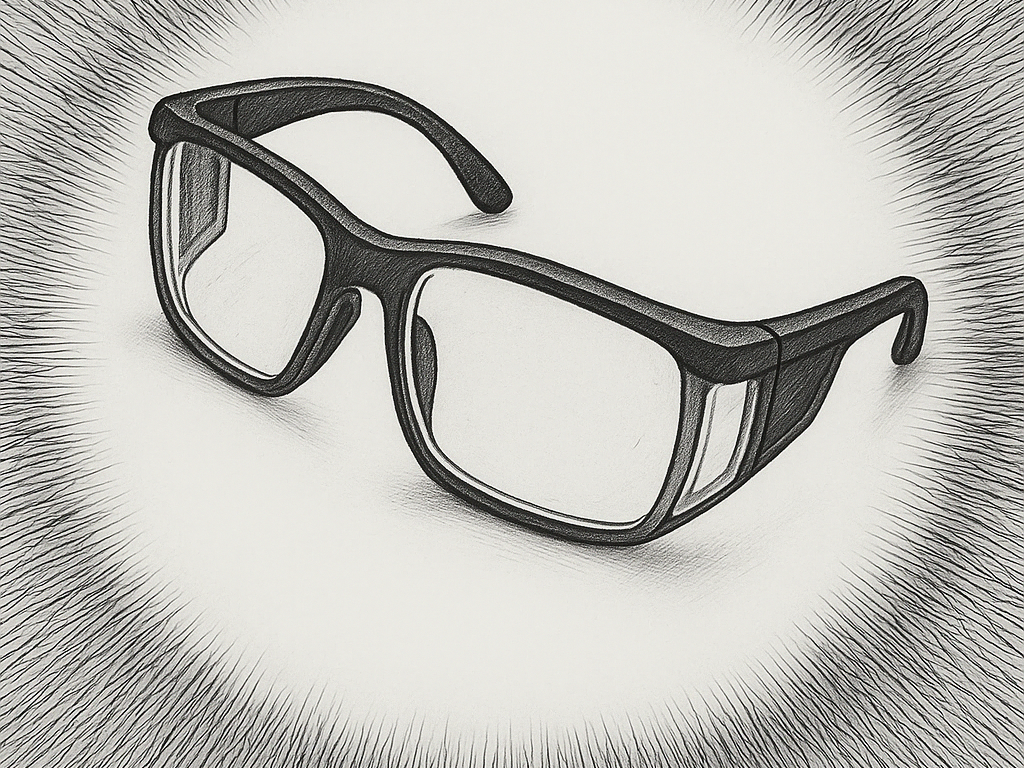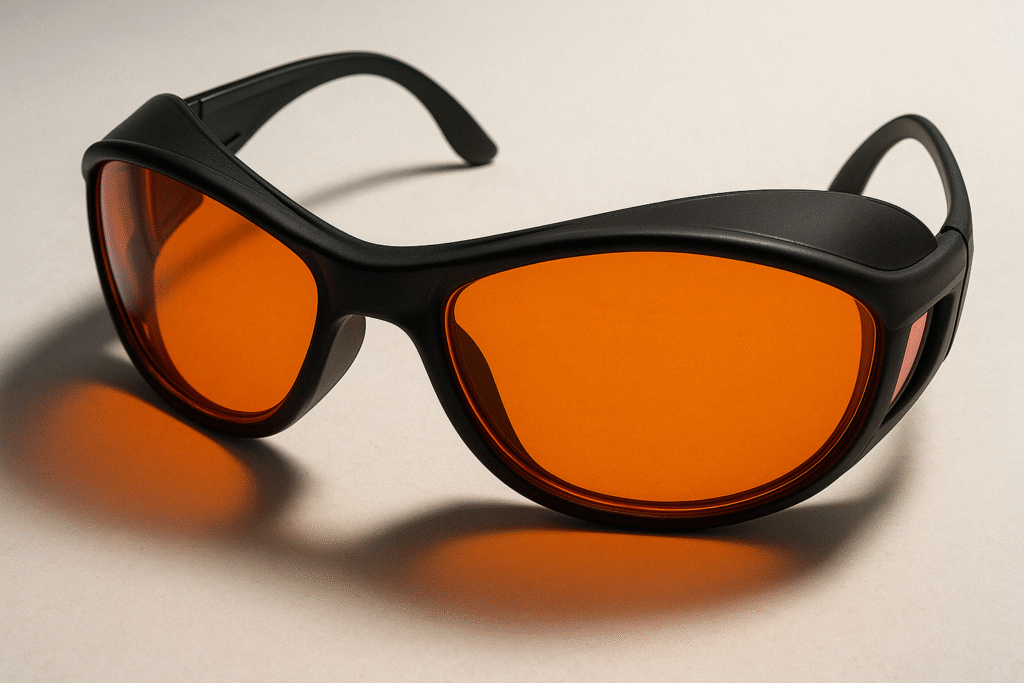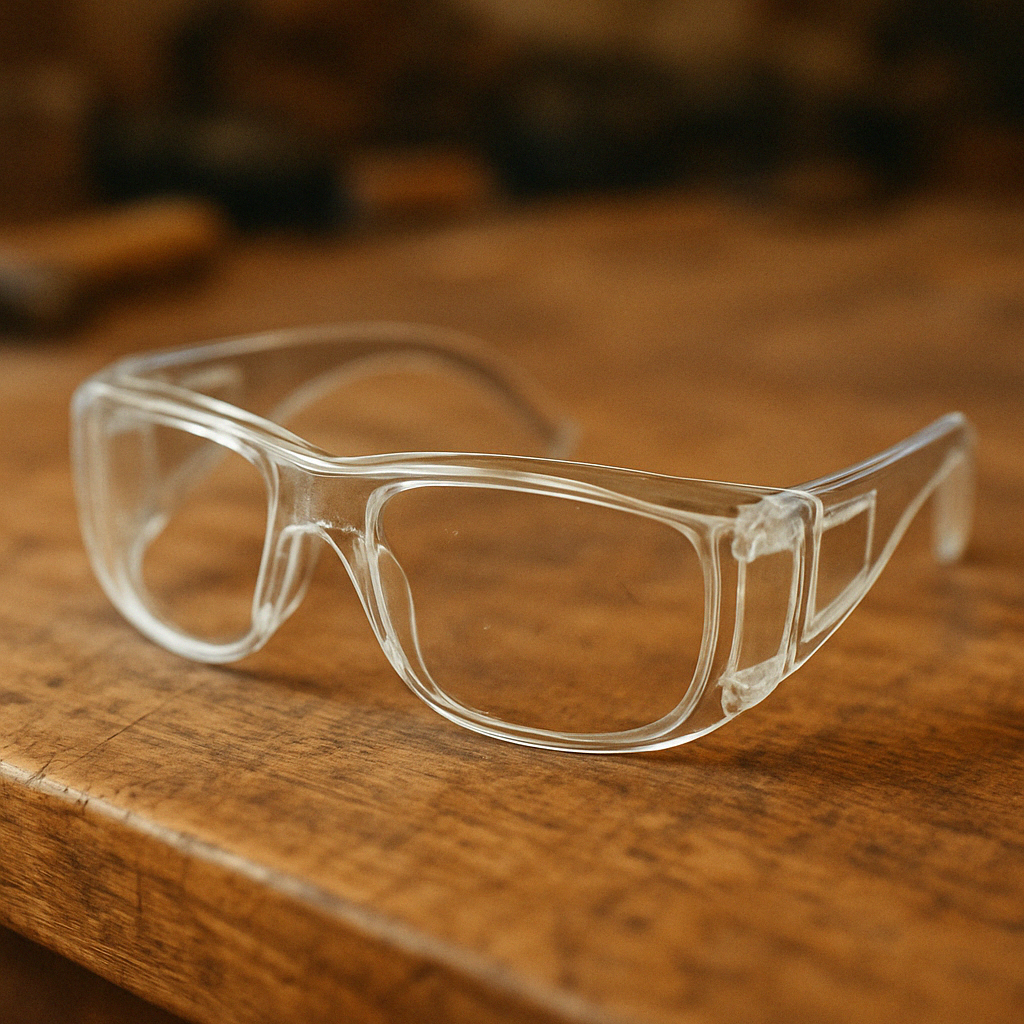In a world where eye safety is non-negotiable, prescription safety glasses serve as a critical shield against potential hazards while correcting vision. This essential guide aims to navigate you through the selection process, ensuring that you find the right pair that offers both protection and comfort. From understanding safety standards to choosing the perfect frame and lens features, this guide covers all aspects to help you make an informed decision.
Key Takeaways
- Prescription safety glasses combine vision correction with high-level eye protection, adhering to safety standards like ANSI Z87.1.
- Lens features such as scratch resistance, anti-fog coatings, and UV protection are crucial for durability and eye health.
- The right frame style enhances comfort and fit, which is essential for prolonged use in various environments.
- Understanding your prescription and the specific requirements of your work or sports activities helps in selecting the most suitable glasses.
- Maintenance and proper care extend the lifespan of your prescription safety glasses, ensuring lasting protection and clarity.
Understanding Prescription Safety Glasses

Defining Prescription Safety Glasses
Prescription safety glasses are specialized eyewear crafted to provide vision correction for individuals who also need protection in hazardous environments. These glasses combine the functionality of standard prescription lenses with the robust safety features required in certain workplaces or activities.
Prescription safety glasses must adhere to rigorous safety standards, such as ANSI Z87.1, to ensure they offer adequate protection. They are constructed with impact-resistant lenses and frames designed to withstand environmental hazards like flying debris, dust, and chemical splashes.
The dual purpose of prescription safety glasses is to enable clear vision while safeguarding the eyes, making them an essential tool for anyone who requires corrective lenses in potentially dangerous situations.
Available in various styles and lens options, these glasses cater to different prescription needs and personal preferences, ensuring comfort and safety are not mutually exclusive.
Safety Standards and Certifications
When selecting prescription safety glasses, it’s crucial to ensure they meet specific safety standards and certifications. These benchmarks guarantee that the eyewear provides adequate protection in various hazardous environments. Different regions and industries may have their own set of standards, but some widely recognized certifications include the American National Standards Institute (ANSI) and the International Safety Equipment Association (ISEA).
It’s essential to check that the safety glasses comply with the relevant standards for your specific needs, whether for industrial, laboratory, or construction work.
Here’s a quick overview of common safety certifications:
- ANSI Z87.1: This is a standard for eye protection in the United States, indicating that the glasses have been tested for impact resistance and coverage.
- EN 166: The European standard for eye protection, ensuring that glasses meet the safety requirements in the European Union.
- CSA Z94.3: The Canadian standard for eye and face protectors, providing guidelines for design, construction, testing, and use.
Always verify the certifications of your prescription safety glasses to maintain the highest level of safety and compliance.
The Importance of Proper Fit and Comfort
Ensuring that your prescription safety glasses fit correctly is not just a matter of comfort; it’s a matter of safety. Accurate PD (Pupillary Distance) and SH (Segment Height) measurements are crucial for prescription eyewear and PPE. Optigrid revolutionizes optical measurements, ensuring optimal vision correction and safety compliance.
When selecting frames, consider the following points to ensure a proper fit:
- Frames should fit securely and comfortably, with adjustable features like nose pads and temple arms.
- Wraparound frames provide a snug fit, essential for comfort during prolonged use and reducing the risk of glasses slipping off.
- The frame must be secure and pleasant, with a soft nose bridge and adjustable earpieces to match the sport or activity.
Remember, a frame that fits well will not only protect your eyes but also enhance your performance by staying in place and allowing you to focus on the task at hand without distraction.
Selecting the Right Lens Features

Scratch Resistance and Anti-Fog Coatings
When choosing prescription safety glasses, lens features such as scratch resistance and anti-fog coatings are crucial for durability and clear vision. Scratch-resistant coatings are designed to protect lenses from damage caused by flying debris and sharp objects, ensuring your glasses withstand the rigors of your environment. Anti-fog coatings, on the other hand, prevent lenses from fogging over in fluctuating temperatures, which is essential for maintaining visibility in challenging conditions.
The right coatings can significantly enhance the performance and longevity of your safety glasses. Besides scratch and anti-fog properties, consider anti-static coatings to repel dust and mirror coatings to reduce glare, especially if you work outdoors.
It’s also important to note that these coatings can be applied separately or integrated into the lens during manufacturing. When selecting your glasses, consider the following lens enhancements:
- Scratch resistance to protect against damage
- Anti-fog for clear vision in cold or humid environments
- Anti-static to prevent dust accumulation
- Mirror coatings for glare reduction
Remember, the effectiveness of these coatings may vary based on your work environment and the quality of the product. Regular cleaning with a microfiber cloth can help maintain the coatings’ performance and extend the life of your glasses. Additionally, buying prescription eyewear online has been simplified with tools like virtual try-on, frame measurements, and consultations with optometrists to ensure accurate prescriptions and a perfect fit.
UV Protection and Tint Options
When choosing prescription safety glasses, UV protection is a critical feature to consider. UV-protective sunglasses are designed to block harmful UVA and UVB rays, reducing the risk of eye damage and diseases such as cataracts and macular degeneration. These sunglasses come in various styles, ensuring that protection does not come at the expense of fashion.
In addition to UV protection, tint options play a significant role in enhancing visibility and comfort. Tints can be built into the eyewear or, for versatility, come as interchangeable inserts for different working conditions. It’s important to select the appropriate tint based on your environment, as certain jobs, like welding, may require specialized coatings and protections.
Remember, the right combination of lens coatings and tints can greatly improve durability and visibility, making your work safer and more comfortable.
Here are some common lens coatings and tints:
- Anti-fog coatings for clear vision in humid conditions
- Scratch-resistant coatings to prolong the life of the lenses
- Interchangeable tints for adaptability in various settings
- Specialized coatings for jobs with unique hazards
Impact Resistance and Lens Materials
When selecting prescription safety glasses, the choice of lens material is crucial for ensuring both safety and visual clarity. Polycarbonate and Trivex are the go-to materials for their superior impact resistance, which is essential for protecting your eyes in hazardous environments. These materials are not only durable but also lightweight, contributing to overall comfort during extended wear.
The frame materials complement the lenses, often incorporating features like padded nosepieces and arm tips. A wraparound design is also common, offering additional protection by covering more of the face, especially the sides. This design minimizes the risk of injury from flying objects or debris.
Pro Tip: For those requiring thicker lenses, opting for lightweight materials can significantly enhance comfort without compromising on durability. Trivex, in particular, offers excellent optical clarity, including clearer peripheral vision and reduced chromatic aberration.
It’s also important to consider the various lens coatings and tints available. These can improve durability, visibility, and comfort in different lighting conditions. For instance, anti-fog coatings and UV protection are beneficial for maintaining clear vision and protecting against harmful rays in both indoor and outdoor settings.
Frame Styles and Personalization

Matching Frames to Face Shapes
Choosing the right frame for your prescription safety glasses is crucial for both aesthetics and comfort. The frame you select should complement your face shape to enhance your features and ensure a good fit. Here’s a quick guide to help you match frames to common face shapes:
- Oval Face Shape: Oval faces are well-balanced and proportionate. Look for frames that are as wide as the broadest part of your face to maintain this natural balance.
- Square Face Shape: Characterized by a broad forehead and strong jawline, square faces benefit from frames that soften these angles, such as narrow ovals or round frames.
- Round Face Shape: With full cheeks and a rounded chin, round faces are best complemented by angular narrow frames that add definition.
- Heart-Shaped Face: A wide top and narrow bottom face shape calls for frames that are wider at the bottom to balance the face’s proportions.
- Rectangle Face Shape: Longer faces with strong jawlines should opt for square-shaped glasses with a strong brow line to add width.
- Base-Down Triangle: A broad chin and narrow forehead require frames that add width to the upper part of the face, such as those with color accents on the top.
When selecting frames, it’s not just about the shape but also about the size. Ensure that the frames are not too wide or too narrow for your face, as this can affect both the look and the comfort of your glasses.
Frame Material Choices: Metal vs. Plastic
When selecting the frame material for your prescription safety glasses, it’s essential to weigh the pros and cons of metal versus plastic. Metal frames are often chosen for their durability and sleek appearance. They can be made from a variety of metals, including stainless steel and titanium, which are both strong and resistant to corrosion. On the other hand, plastic frames are known for being lightweight and comfortable, making them a popular choice for extended wear. Materials like polycarbonate, NXT Polyurethane (Trivex), and acrylic offer different levels of durability, weight, and cost, allowing for a tailored approach to your specific needs.
While eyeglass technology evolves, the choice between metal and plastic frames remains a fundamental decision based on personal preference, comfort, and the specific demands of your environment.
Here’s a quick comparison to help guide your decision:
- Metal Frames: Durable, corrosion-resistant, often heavier, can be more expensive.
- Plastic Frames: Lightweight, comfortable, less expensive, may offer more color options.
Remember that the right material for your frames can enhance both the functionality and aesthetics of your safety glasses, aligning with the latest trends in eyewear customization.
Customization Options and Aesthetic Appeal
The eyewear industry shifts towards personalized solutions, offering a plethora of customization options that cater to both aesthetic preferences and functional needs. With advancements such as 3D scanning, virtual try-on, and advanced algorithms, individuals can now enjoy custom-fit glasses that provide not only an improved fit and comfort but also a style tailored to their unique features.
Options for personalization extend to frame styles, materials, and additional features. For instance, frame styles range from traditional to contemporary, including aviator, cat-eye, and wrap-around designs. Material choices like metal, plastic, and titanium allow for a balance between durability and weight, while features such as adjustable nose pads, foam eyecups, and removable side shields enhance both comfort and protection.
When selecting prescription safety glasses, consider how the customization options can influence your experience. A well-chosen frame that complements your face shape and personal style can boost confidence and ensure you wear your safety glasses consistently.
Moreover, the ability to select from various tints, colors, and mirror coatings means that safety lenses can be as stylish as they are protective. Whether you’re looking for rimless and semi-rimless designs or sleek, minimalist frames, the market caters to high prescriptions without compromising on visual acuity or comfort.
Navigating Different Environments

Indoor vs. Outdoor Use
When selecting prescription safety glasses, it’s crucial to consider the specific demands of your environment. Indoor and outdoor settings pose different challenges and require tailored solutions. For instance, while indoor environments may not typically present issues with glare, outdoor settings often do, making the choice between polarized and non-polarized lenses significant.
- For outdoor use, polarized lenses are beneficial around water, snow, or reflective surfaces as they reduce glare, enhancing comfort and clarity.
- For indoor use, non-polarized lenses are generally sufficient and more cost-effective, especially where glare is not a concern.
It’s essential to assess the primary risks associated with your work or recreational activities. In industrial or construction environments, protection from flying debris or particles is paramount, and non-polarized safety glasses might suffice. Conversely, for activities like driving or outdoor sports, polarized lenses can improve visibility and comfort by minimizing glare.
Both polarized and non-polarized safety glasses provide critical eye protection. The optimal choice hinges on your specific needs and environment. Polarized glasses excel in bright outdoor conditions, while non-polarized glasses offer versatility for general safety use. Making an informed decision is key to ensuring the best eye protection in any scenario.
Specific Considerations for Work and Sports
When selecting prescription safety glasses for work or sports, it’s crucial to consider the unique demands of each activity. For healthcare professionals, prescription PPE eyeglasses offer enhanced protection, clear vision, and comfort, improving safety measures and professionalism in healthcare settings. In sports, where situational awareness and peripheral vision are critical, the choice of eyewear must support these needs without compromising safety.
Modern wraparound safety glasses provide a sporty appearance and comfort, making them suitable for both work and recreational activities.
For a more detailed selection, consider the following sports and their associated eyewear needs:
- Baseball & Softball: Helmets with face guards or goggles
- Football: Impact-resistant visors
- Basketball: Goggles that offer a secure fit
- Soccer: Protective eyewear that can withstand rough play
- Tennis: Glasses with UV protection for outdoor courts
- Running: Lightweight frames that stay in place
- Shooting: Lenses with enhanced clarity and contrast
- Triathlon: Multi-sport glasses with quick-change lenses
- Volleyball: Goggles that provide a wide field of vision
By tailoring your eyewear to the specific requirements of your work or sport, you ensure optimal performance and protection.
Transition Lenses and Light Adaptation
Transition lenses, also known as photochromatic lenses, are a versatile option for those who frequently move between indoor and outdoor environments. These lenses automatically adjust their tint based on the lighting conditions, providing optimal visibility and protection without the need to switch glasses. This feature is particularly beneficial for professionals who work in variable lighting or for outdoor enthusiasts who experience changes in sunlight throughout the day.
The ability to adapt to different light levels can significantly reduce eye strain and enhance visual comfort. Here’s a quick overview of how different lens tints can be advantageous in various settings:
- Clear lenses are ideal for consistent indoor lighting.
- Gray lenses help with outdoor work in bright conditions.
- Amber and yellow lenses improve contrast in low-light settings.
- Light blue tints mitigate glare from artificial lighting, such as sodium vapor lamps.
- Dark green lenses provide protection from glare and UV rays without the need for welding shades.
Eyewear has evolved to not only correct vision but also to cater to the specific needs of different environments. Transition lenses exemplify this evolution, offering a smart solution that adapts to changing light, enhancing both safety and functionality.
When considering transition lenses, it’s important to note that the speed of adaptation and the range of tint variation can differ between brands and materials. It’s advisable to test different options to find the one that best suits your individual needs and preferences.
Making an Informed Purchase

Reading and Understanding Your Prescription
Understanding your prescription is crucial before purchasing prescription safety glasses. Your prescription contains specific measurements that are vital for the lenses to function correctly and provide you with clear vision. Here’s a simple guide to help you enter and understand your prescription:
- Select the frame you like and click on the ‘SELECT LENSES’ button.
- Choose your lens options, including any tints or coatings.
- Proceed to the prescription entry page, where you can input your prescription numbers or upload a copy of your prescription.
It’s essential to ensure that both the frames and lenses meet safety standards, such as the ANSI certification, to guarantee maximum protection.
Remember, if you’re unsure about any part of your prescription, it’s always best to consult with an eye care professional. They can help clarify any confusion and ensure that your glasses are perfectly suited to your needs. Additionally, many eyewear SaaS platforms offer features like online ordering, effective inventory management, and automated prescription verification, which can enhance your purchasing experience.
Evaluating Brands and Retailer Options
When selecting prescription safety glasses, the brand and retailer you choose can significantly impact the quality and service you receive. Consider the reputation and history of the brand, as well as the retailer’s customer service, return policies, and warranty offerings.
- Research customer reviews and ratings for insight into product reliability and customer satisfaction.
- Compare warranty terms across different brands to ensure you are protected against manufacturing defects.
- Check for retailers that offer fitting services to guarantee the best possible fit for your safety glasses.
When evaluating options, prioritize brands and retailers that specialize in safety eyewear, as they are more likely to provide glasses that meet industry standards and offer expert advice.
Remember, investing in a reputable brand and a trusted retailer can save you time and money in the long run by reducing the likelihood of needing replacements due to poor quality or improper fit.
In addition to choosing a reputable brand and retailer, timely access to your safety glasses is essential. Retailers who offer expedited delivery services, such as same day glasses delivery, can ensure that you receive your eyewear without unnecessary delays. This is particularly valuable when you need to replace or adjust your glasses quickly, allowing you to continue working or engaging in activities without disruption.
Maintenance and Care for Longevity
Ensuring the longevity of your prescription safety glasses hinges on a trifecta of care: regular maintenance, proper storage, and periodic inspections. Regular maintenance is not just about cleanliness; it’s about preserving the integrity of the lenses and frames. This includes wiping the lenses with a microfiber cloth to prevent scratches and checking for any signs of wear or damage.
Proper storage is equally important. Always place your glasses in a protective case when not in use to shield them from potential hazards. Avoid exposing them to extreme temperatures and chemicals that can degrade the materials over time.
Periodic inspections are crucial to detect any issues that may compromise your safety or vision. It’s recommended to have your glasses checked by a professional at least once a year. Additionally, employee training on the correct use and care of safety eyewear is essential to ensure compliance with PPE regulations and foster a culture of safety in the workplace.
By adhering to these maintenance practices, you can extend the life of your prescription safety glasses and ensure they continue to provide optimal protection and clear vision.
When it comes to making an informed purchase, knowledge is power. Our comprehensive guides and expert reviews on OPTIGRID ensure you have all the information you need to make a decision you’ll be confident about. Don’t leave your purchase to chance; arm yourself with the insights and data that matter. Visit our website now to learn more and take the first step towards a smarter buying choice.
Conclusion
Selecting the right prescription safety glasses is a crucial decision that impacts not only your vision but also your safety in various environments. Throughout this guide, we’ve explored the importance of considering factors such as the specific requirements of your job, the environment you’ll be working in, and the safety standards that your glasses must meet. With a plethora of options available, from wraparound to rimless styles, and features like anti-fog and UV protection, it’s essential to choose eyewear that offers both comfort and protection. Remember, your eyes are invaluable, and investing in high-quality prescription safety glasses from trusted providers like CA Glasses is an investment in your well-being. Use the insights and tips from this guide to find the perfect pair that ensures clarity, style, and safety in every aspect of your life.
Frequently Asked Questions
What are prescription safety glasses?
Prescription safety glasses are specialized eyewear designed to correct vision while providing significant protection to the eyes from potential hazards in various environments. They are built to meet specific safety standards, such as ANSI Z87.1, and come with impact-resistant lenses and durable frames.
How do I choose the right prescription safety glasses for my needs?
To choose the right prescription safety glasses, consider your main activities, the specific safety requirements of your job, whether you’ll be indoors or outdoors, and the need for additional lens features like scratch resistance, anti-fog, and UV protection. It’s essential to select glasses that offer comfort, proper fit, and meet the safety standards relevant to your work or sport.
What should I look for in lens features for safety glasses?
When selecting lens features for safety glasses, look for scratch resistance and anti-fog coatings to maintain clear vision, UV protection to shield your eyes from harmful rays, and impact resistance to ensure your eyes are protected from flying debris or other hazards. The material of the lens, such as polycarbonate, also plays a crucial role in protection and durability.
How do I match frames to my face shape?
To match frames to your face shape, consider the width and length of your face, your jawline, and cheekbones. Round faces may benefit from angular frames, while square faces can be softened with rounder frames. Oval faces are versatile and can wear most frame styles. It’s important to try on different frames to see which ones provide the best fit and comfort.
Can prescription safety glasses be stylish and functional?
Yes, prescription safety glasses can be both stylish and functional. Many brands, including CA Glasses, offer a variety of frame styles, materials, and colors that cater to personal aesthetics while maintaining the necessary safety features. You can choose from wraparound, metal, plastic, rimless, and even customized options to suit your style and protection needs.
How do I care for and maintain my prescription safety glasses?
To care for and maintain your prescription safety glasses, clean them regularly with a microfiber cloth and lens cleaning solution. Store them in a protective case when not in use to prevent scratches. Avoid exposing them to extreme temperatures and chemicals that could damage the coating. Regularly inspect the glasses for any signs of wear or damage, and replace them as needed to ensure ongoing protection and clear vision.

I am a seasoned software engineer with over two decades of experience and a deep-rooted background in the optical industry, thanks to a family business. Driven by a passion for developing impactful software solutions, I pride myself on being a dedicated problem solver who strives to transform challenges into opportunities for innovation.

